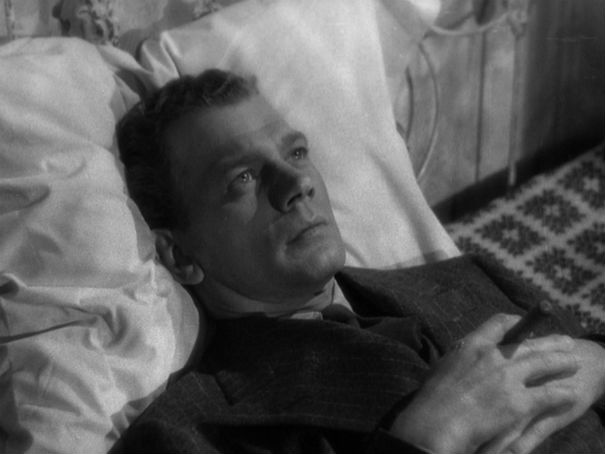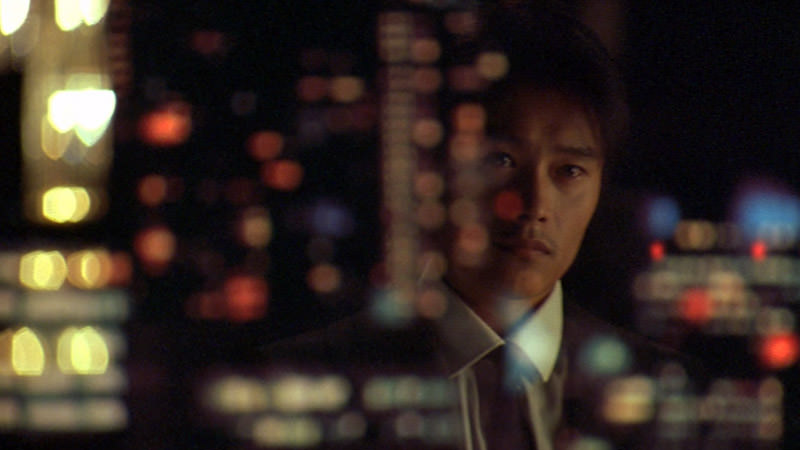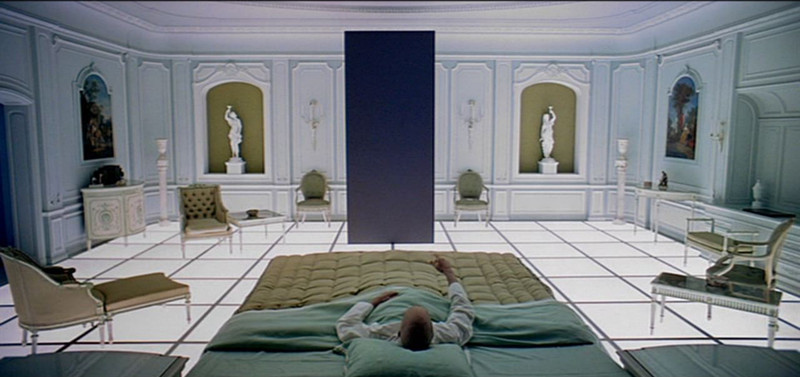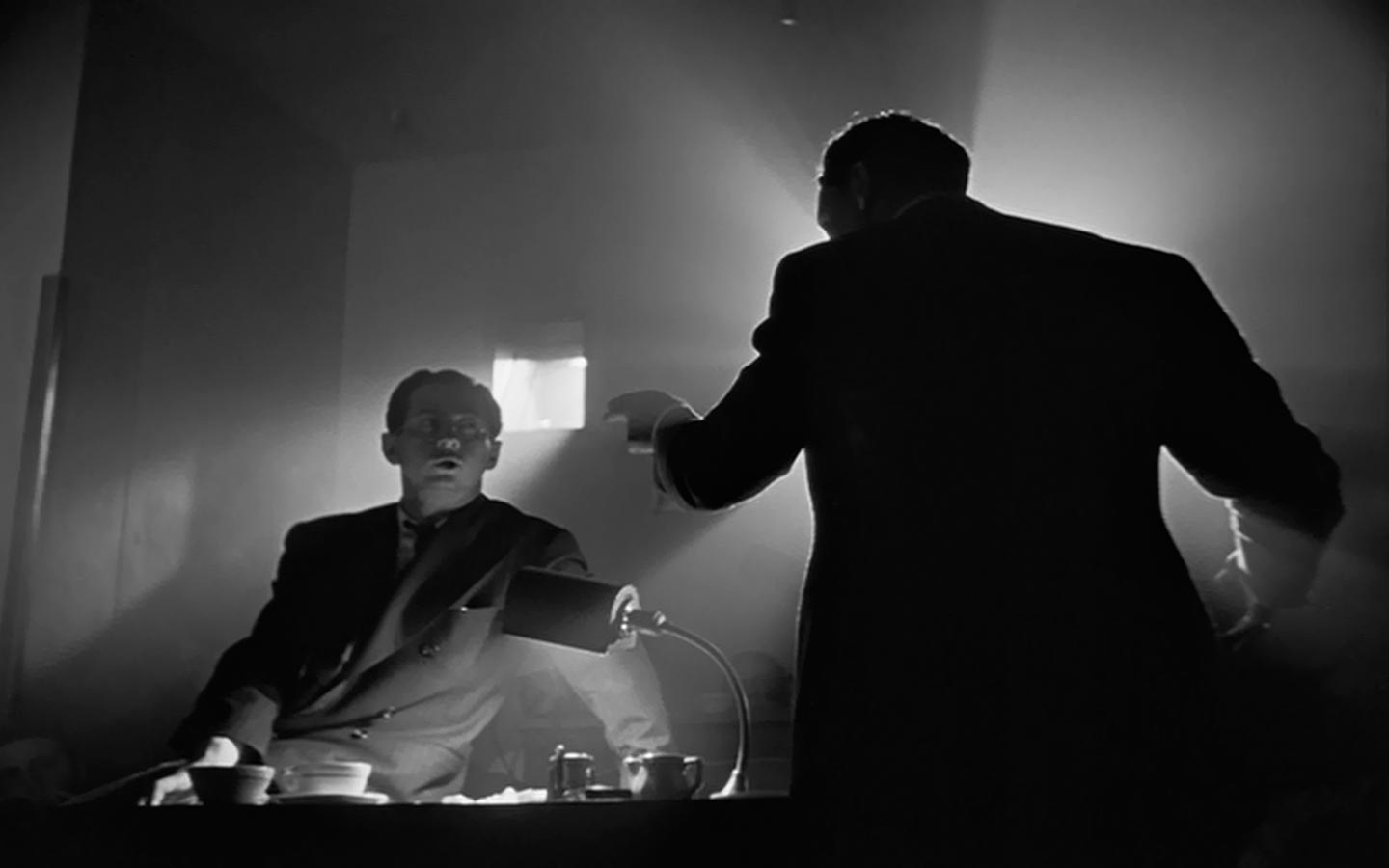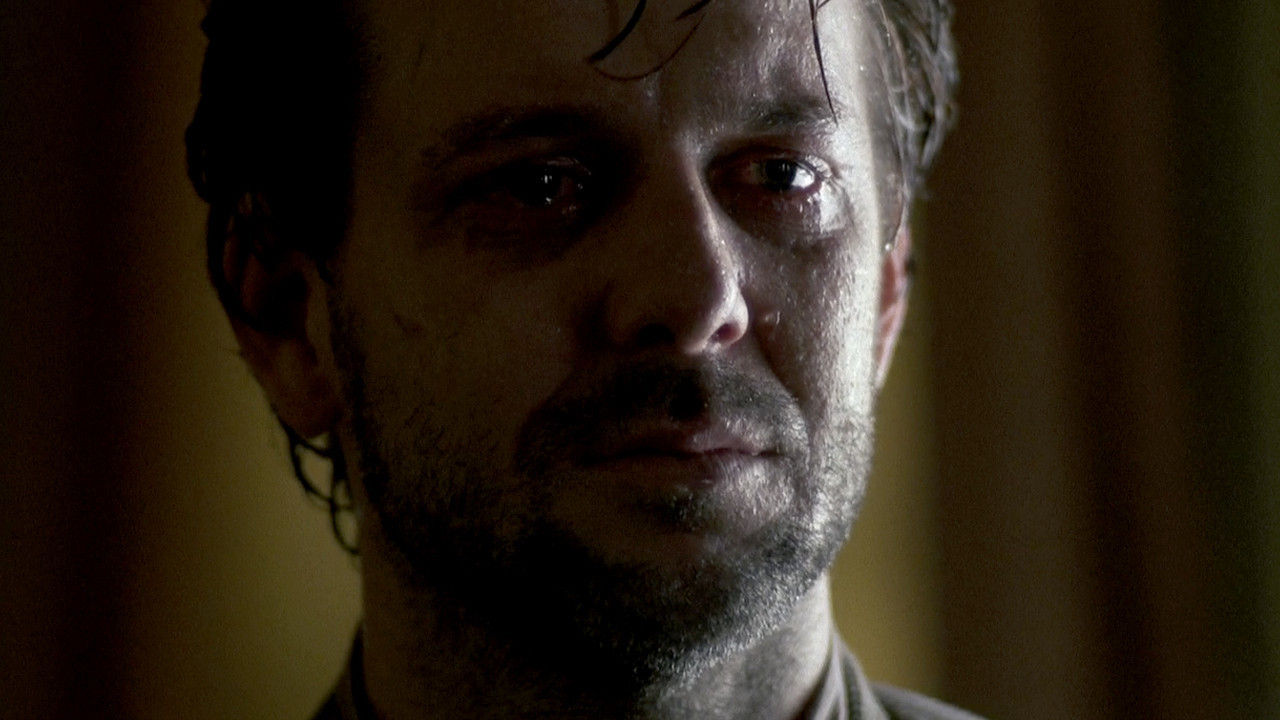5. Shadow Of A Doubt
Hitchcock utilized his arsenal of director’s weapons like no other before or since. He was more than the master of suspense, he was also the master of light and shade. For example, early on in Shadow Of A Doubt when we see Uncle Charlie’s rented room, sunlight coming through the blinds create the shadows of an artificial jail. Without us knowing it, Hitchcock has sneakily given away his checkered past. It’s amazing what one can imply with just a tungsten lamp and a few scrims.
The scenes with Uncle Charlie and his niece always seem to be dimly lit any mysterious. Yet when the two of them are in a location with the rest of the family, the lighting seems brighter and safer. Hitchcock uses this subliminal tool to make us buy into the nefarious intentions of Uncle Charlie. That’s why Hitchcock remains the master manipulator.
4. A Bittersweet Life
Typical of many of the great South Korean Films before it, A Bittersweet Life is replete with beautifully efficient cinematography. For such an amazingly violent endeavor, this movie’s lighting is delicately graceful and benign. It manages to seamlessly imply a contradiction between content and presentation.
Kim Sun-woo’s loneliness is in stark contrast with his chosen career as an enforcer for the mafia. Most of the time he seems to be shrouded in the dark. Shrouded that is, until he meets Hee-soo. Once she graces him with her innocence, the light seems to follow him. In his face to face interactions with her and even in his memories, Hee-soo brightens his world… and ours. This film is extraordinary well done and, once again, a mystery in the United States.
3. 2001: A Space Odyssey
It’s impossible to describe this film’s incredible lighting without sounding like Captain Obvious. Everything about it was impossibly well done and mind-bogglingly complex. Kubrick was always known as a pioneer and this film still stands the test of time, continually dropping our jaws with it’s amazing light show. I mean, how did they manage to create the reflections in Bowman’s face shield as he hurtles through the tunnel of light?
Another technical challenge to this film was the dichotomy of disciplines. Kubrick needed, wanted, and had to have, the most synthetic light possible for the interior shots aboard Discovery One. The more artificial the better. Yet the moon shots and the dawn of man scenes required an honest realism. Stanley and cinematographer Geoffrey Unsworth pull off the transition admirably. Still awe inspiring to this day, 2001 was a game changer.
2. Citizen Kane
One of the big boys of cinematic epics, Citizen Kane is the total package. Everyone knows about this leviathan’s heavyweight credentials, but its virtues extend beyond story and acting. Part of the magic lies in the light. Moody and deliberate, Orson Welles’ masterpiece is the bellwether for cinematic lighting. The many cavernous rooms of Xanadu are a personification of Kane himself: Imposing and ominous. Each scene was meticulously lit and shot in a manner not seen in Hollywood before, making it the true original it is today.
Much like Spielberg did with Oskar Schindler, Welles did with Charles Foster Kane. Both films feature shadowy compositions which belie men who love attention and living in the spotlight. Yet, underneath all the bravado, they suffer from the same insecurities as the rest of us. Strange how lighting can humanize even the largest of personalities.
1. Angel Heart
Absolutely under-appreciated as a director, Alan Parker is truly a genius when it comes to cinematic lighting. For example, one of Parker’s signature moves utilizes light coming down from a window we can’t see. This effect, shot in a studio, shows us how small the character is when compared to his struggle. The light and shadows coming from a window up on an infinitely high wall paints a daunting portrait. The character’s conflict subconsciously becomes an almost hopeless endeavor.
Parker’s films rely heavily on mood created by light, more so than most other directors. None of his pictures do this quite as well as Angel Heart. Dark and sinister, a foreboding story such as this needs equally foreboding lighting to make an impact. Harry Angel’s nightmare descent into hell via elevator is truly a lighting aficionado’s sweet dream and warrants the top spot in our list.
Author Bio: E.M. Bookman is tragicomedy screenwriter currently honing his craft at the Colorado Film School. When not writing, he’s more than likely watching college football or checking out a movie. Surprisingly fast, he’s run sub 4.4 forty and is capable of doing so while smoking.
